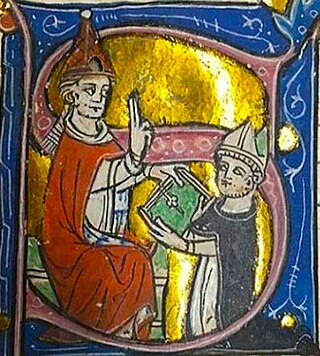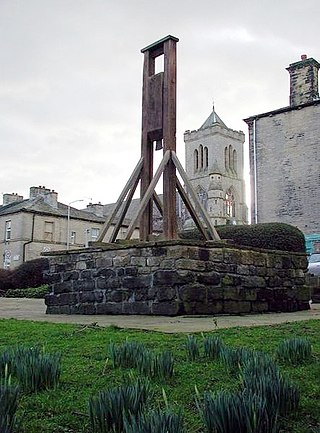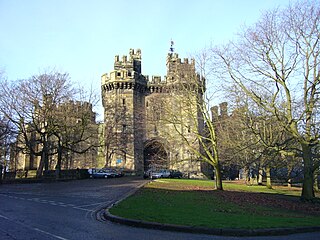
The Inquisition was a judicial procedure and a group of institutions within the Catholic Church whose aim was to combat heresy, apostasy, blasphemy, witchcraft, and customs considered deviant. Violence, torture, or the simple threat of its application, were used by the Inquisition to extract confessions and denunciations from heretics. Studies of the records have found that the overwhelming majority of sentences consisted of penances, but convictions of unrepentant heresy were handed over to the secular courts, which generally resulted in execution or life imprisonment. The Inquisition had its start in the 12th-century Kingdom of France, with the aim of combating religious deviation, particularly among the Cathars and the Waldensians. The inquisitorial courts from this time until the mid-15th century are together known as the Medieval Inquisition. Other groups investigated during the Medieval Inquisition, which primarily took place in France and Italy, include the Spiritual Franciscans, the Hussites, and the Beguines. Beginning in the 1250s, inquisitors were generally chosen from members of the Dominican Order, replacing the earlier practice of using local clergy as judges.

The Medieval Inquisition was a series of Inquisitions from around 1184, including the Episcopal Inquisition (1184–1230s) and later the Papal Inquisition (1230s). The Medieval Inquisition was established in response to movements considered apostate or heretical to Roman Catholicism, in particular Catharism and Waldensians in Southern France and Northern Italy. These were the first movements of many inquisitions that would follow.

A witch-hunt, or a witch purge, is a search for people who have been labeled witches or a search for evidence of witchcraft. Practicing evil spells or incantations was proscribed and punishable in early human civilizations in the Middle East. In medieval Europe, witch-hunts often arose in connection to charges of heresy from Christianity. An intensive period of witch-hunts occurring in Early Modern Europe and to a smaller extent Colonial America, took place from about 1450 to 1750, spanning the upheavals of the Counter Reformation and the Thirty Years' War, resulting in an estimated 35,000 to 60,000 executions. The last executions of people convicted as witches in Europe took place in the 18th century. In other regions, like Africa and Asia, contemporary witch-hunts have been reported from sub-Saharan Africa and Papua New Guinea, and official legislation against witchcraft is still found in Saudi Arabia and Cameroon today.
Jury nullification, also known in the United Kingdom as jury equity or a perverse verdict, is when the jury in a criminal trial gives a verdict of not guilty even though they think a defendant has broken the law. The jury's reasons may include the belief that the law itself is unjust, that the prosecutor has misapplied the law in the defendant's case, that the punishment for breaking the law is too harsh, or general frustrations with the criminal justice system. Some juries have also refused to convict due to their own prejudices in favor of the defendant. Such verdicts are possible because a jury has an absolute right to return any verdict it chooses.

The Crucible is a 1953 play by the American playwright Arthur Miller. It is a dramatized and partially fictionalized story of the Salem witch trials that took place in the Province of Massachusetts Bay from 1692 to 1693. Miller wrote the play as an allegory for McCarthyism, when the United States government persecuted people accused of being communists. Miller was questioned by the House of Representatives' Committee on Un-American Activities in 1956 and convicted of contempt of Congress for refusing to identify others present at meetings he had attended.

The Salem witch trials were a series of hearings and prosecutions of people accused of witchcraft in colonial Massachusetts between February 1692 and May 1693. More than 200 people were accused. Thirty people were found guilty, nineteen of whom were executed by hanging. One other man, Giles Corey, died under torture after refusing to enter a plea, and at least five people died in the disease-ridden jails.
In theatre, breaking character occurs when an actor fails to maintain the illusion that they are the character they are supposedly portraying. This is considered unprofessional while performing in front of an audience or camera. British English uses a specific slang term, corpsing, to describe one of the most common ways of breaking character—when an actor loses their composure and laughs or giggles inappropriately during a scene. If the breaking of character is particularly serious, it normally results in an abandonment of a take in recorded or filmed drama.

Pat O'Neill Riley is an androgynous fictional character created and performed by Julia Sweeney for the American sketch comedy show Saturday Night Live (SNL) from 1990 to 1994. The character was later featured in the film It's Pat. The central humorous aspect of sketches featuring Pat is the inability of others to determine the character's gender.

Bernard Gui, also known as Bernardo Gui or Bernardus Guidonis, was a Limousin Dominican friar, Bishop of Lodève, and a papal inquisitor during the later stages of the Medieval Inquisition.
Capital punishment in traditional Jewish law has been defined in Codes of Jewish law dating back to medieval times, based on a system of oral laws contained in the Babylonian and Jerusalem Talmud, the primary source being the Hebrew Bible. In traditional Jewish law there are four types of capital punishment: a) stoning, b) burning by ingesting molten lead, c) strangling, and d) beheading, each being the punishment for specific offenses. Except in special cases where a king can issue the death penalty, capital punishment in Jewish law cannot be decreed upon a person unless there were a minimum of twenty-three judges (Sanhedrin) adjudicating in that person's trial who, by a majority vote, gave the death sentence, and where there had been at least two competent witnesses who testified before the court that they had seen the litigant commit the offense. Even so, capital punishment does not begin in Jewish law until the court adjudicating in this case had issued the death sentence from a specific place on the Temple Mount in the city of Jerusalem.

Thomas James Davis was an American comedian, writer, and author. He is best known for his comedy partnership with Al Franken, as half of the comedy duo "Franken & Davis" on Saturday Night Live.

Capital punishment in Iceland was practiced until 1830, with 240 individuals executed between 1551 and 1830. The methods of execution included beheading, hanging, burning, and drowning. Danish laws were influential, particularly after Lutheranism's adoption in the 17th century. The last execution occurred in 1830, and the death penalty was abolished in 1928. Infanticide was a common crime, often committed by women, and many were sentenced to death, but their sentences were commuted. The last execution of an Icelander happened in Denmark in 1913. The death penalty was officially abolished in Iceland in 1928, and its reintroduction has been rendered unconstitutional since a 1995 constitutional revision.

The Halifax Gibbet was an early guillotine used in the town of Halifax, West Yorkshire, England. Estimated to have been installed during the 16th century, it was used as an alternative to beheading by axe or sword. Halifax was once part of the Manor of Wakefield, where ancient custom and law gave the Lord of the Manor the authority to execute summarily by decapitation any thief caught with stolen goods to the value of 131⁄2d or more, or who confessed to having stolen goods of at least that value. Decapitation was a fairly common method of execution in England, but Halifax was unusual in two respects: it employed a guillotine-like machine that appears to have been unique in the country, and it continued to decapitate petty criminals until the mid-17th century.

Ashford v Thornton (1818) 106 ER 149 is an English criminal case in the Court of King's Bench which upheld the right of the defendant to trial by battle on a private appeal from an acquittal for murder.
Wilkerson v. Utah, 99 U.S. 130 (1879), is a United States Supreme Court case in which the Court affirmed the judgment of the Supreme Court of the Territory of Utah in stating that execution by firing squad, as prescribed by the Utah territorial statute, was not cruel and unusual punishment under the Eighth Amendment to the United States Constitution.

The trials of the Pendle witches in 1612 are among the most famous witch trials in English history, and some of the best recorded of the 17th century. The twelve accused lived in the area surrounding Pendle Hill in Lancashire, and were charged with the murders of ten people by the use of witchcraft. All but two were tried at Lancaster Assizes on 18–19 August 1612, along with the Samlesbury witches and others, in a series of trials that have become known as the Lancashire witch trials. One was tried at York Assizes on 27 July 1612, and another died in prison. Of the eleven who went to trial – nine women and two men – ten were found guilty and executed by hanging; one was found not guilty.

The Samlesbury witches were three women from the Lancashire village of Samlesbury – Jane Southworth, Jennet Bierley, and Ellen Bierley – accused by a 14-year-old girl, Grace Sowerbutts, of practising witchcraft. Their trial at Lancaster Assizes in England on 19 August 1612 was one in a series of witch trials held there over two days, among the most infamous in English history. The trials were unusual for England at that time in two respects: Thomas Potts, the clerk to the court, published the proceedings in his The Wonderfull Discoverie of Witches in the Countie of Lancaster; and the number of the accused found guilty and hanged was unusually high, ten at Lancaster and another at York. All three of the Samlesbury women were acquitted.
Throughout the era of the European witch trials in the Early Modern period, from the 15th to the 18th century, there were protests against both the belief in witches and the trials. Even those protestors who believed in witchcraft were typically sceptical about its actual occurrence.
The Leicester boy trial was one of Leicester's most notorious witchcraft cases, in which a thirteen-year-old boy publicly accused 15 women of causing a possession within him. The case took place in Husbands Bosworth, a small village not far from Leicester in 1616. John Smith fell into a series of violent fits, not even several men could hold him down. He made strange noises, and, as noted in a letter from Alderman Robert Heyrick to his brother Sir William, he would beat himself with inhuman strength, yet somehow remain unharmed. He gave extensive details on their familiars. The two judges, Sir Humphrey Winch and Sir Ranulph Crewe quickly condemned the women, rounding all 15 of them up. Nine of them were tried, found guilty and hanged for allegedly possessing John Smith. The other six were placed in prison to wait their turn. None of them were named before being hanged. King James I happened to be passing through about a month later, and heard what was going on. He called for John Smith to be questioned, and had little trouble determining the child was fraudulent. He broke down, and confessed the truth. Of the six women who had been imprisoned, only five of them were released, as one of them died inside. According to a timeline, the woman who had died told the jailer she was working with the witches against Smith the day before she died. She had begged him not to say anything because the witches would harm her.
Mary Lakeland also known as Mother Lakeland and the “Ipswich Witch”, was an English woman executed for witchcraft in Ipswich. She belonged to the few people in England to have been executed by burning after a conviction of witchcraft. She was the last person executed for witchcraft in the town of Ipswich.












